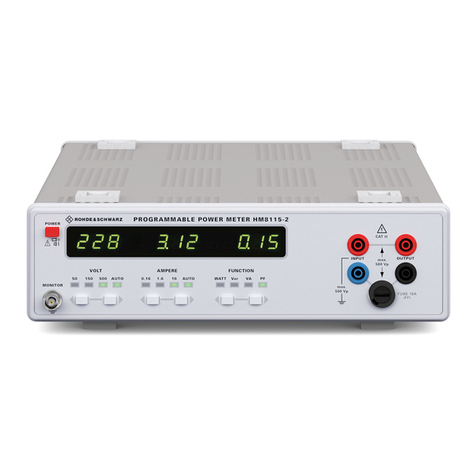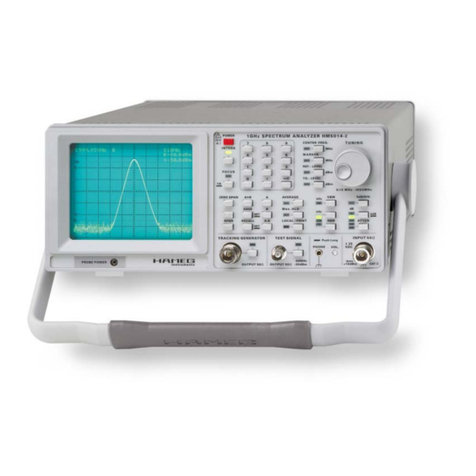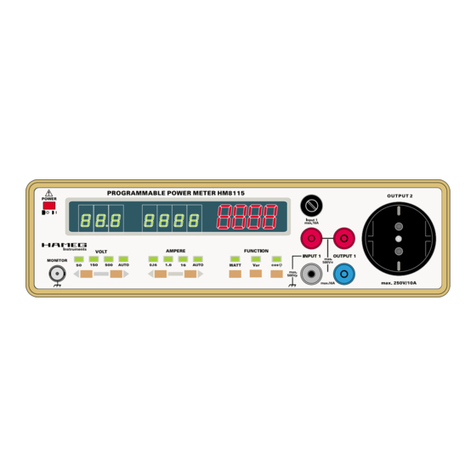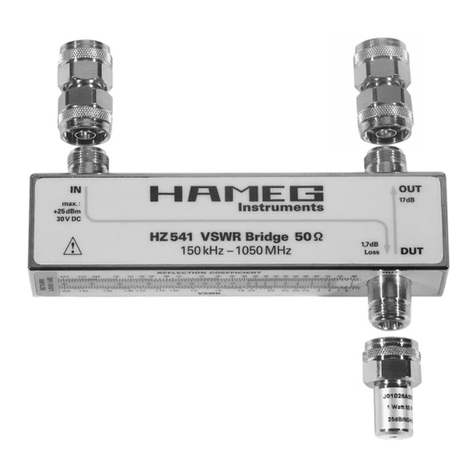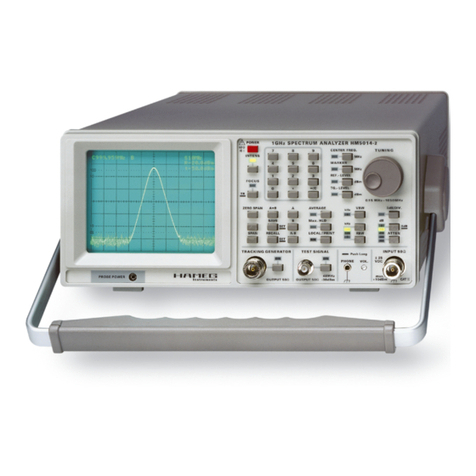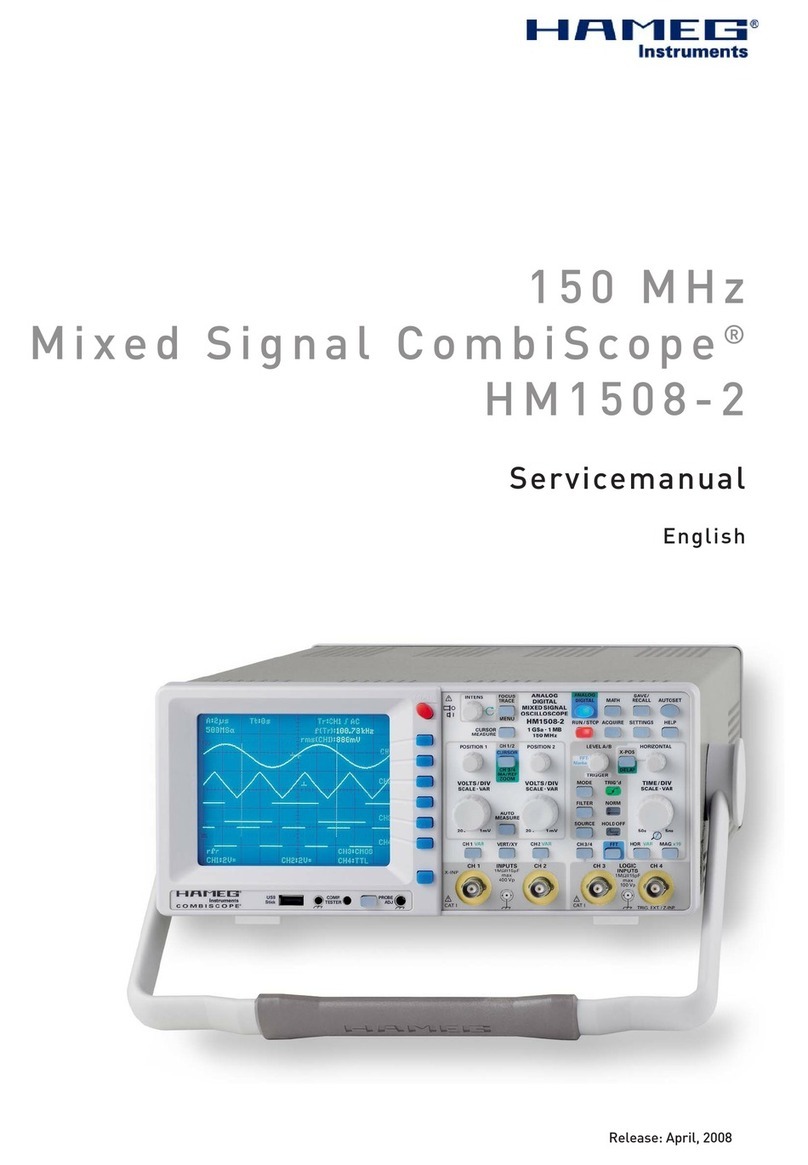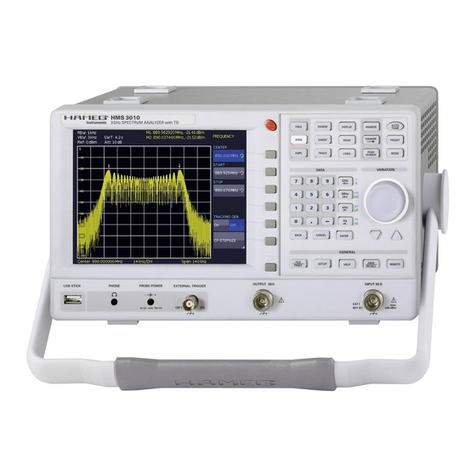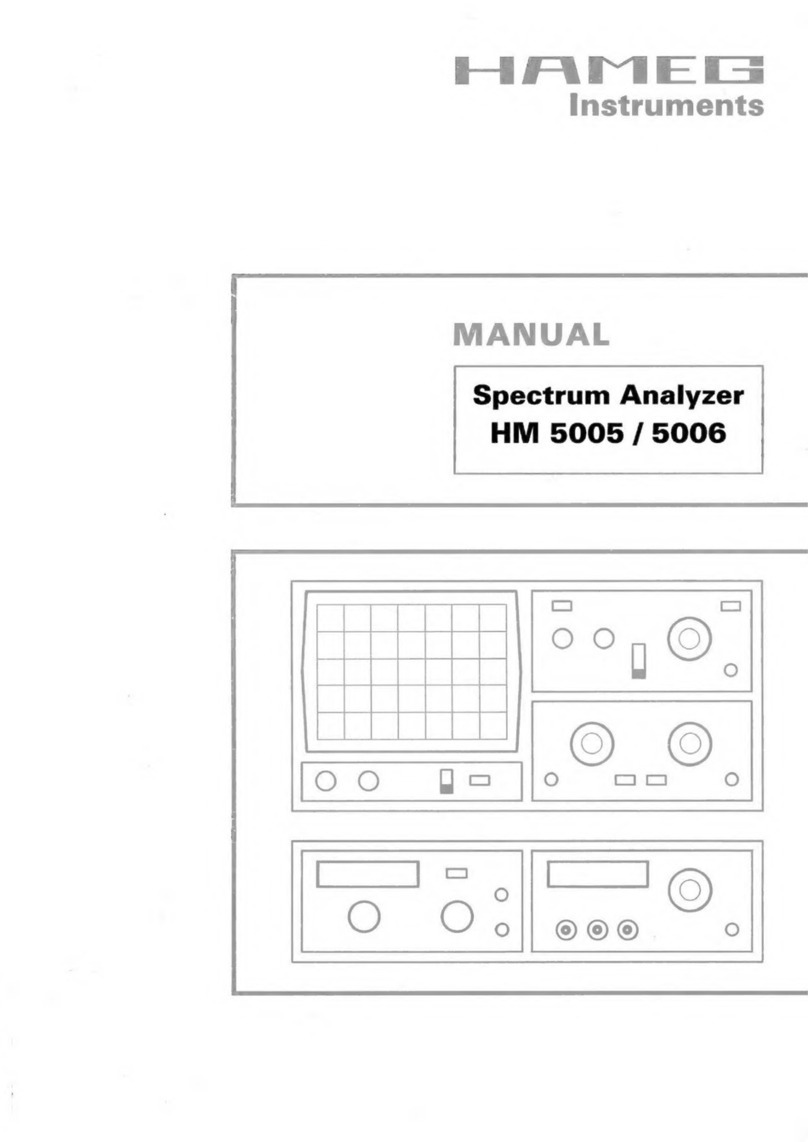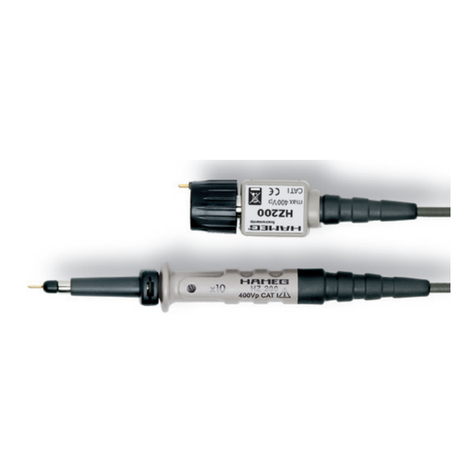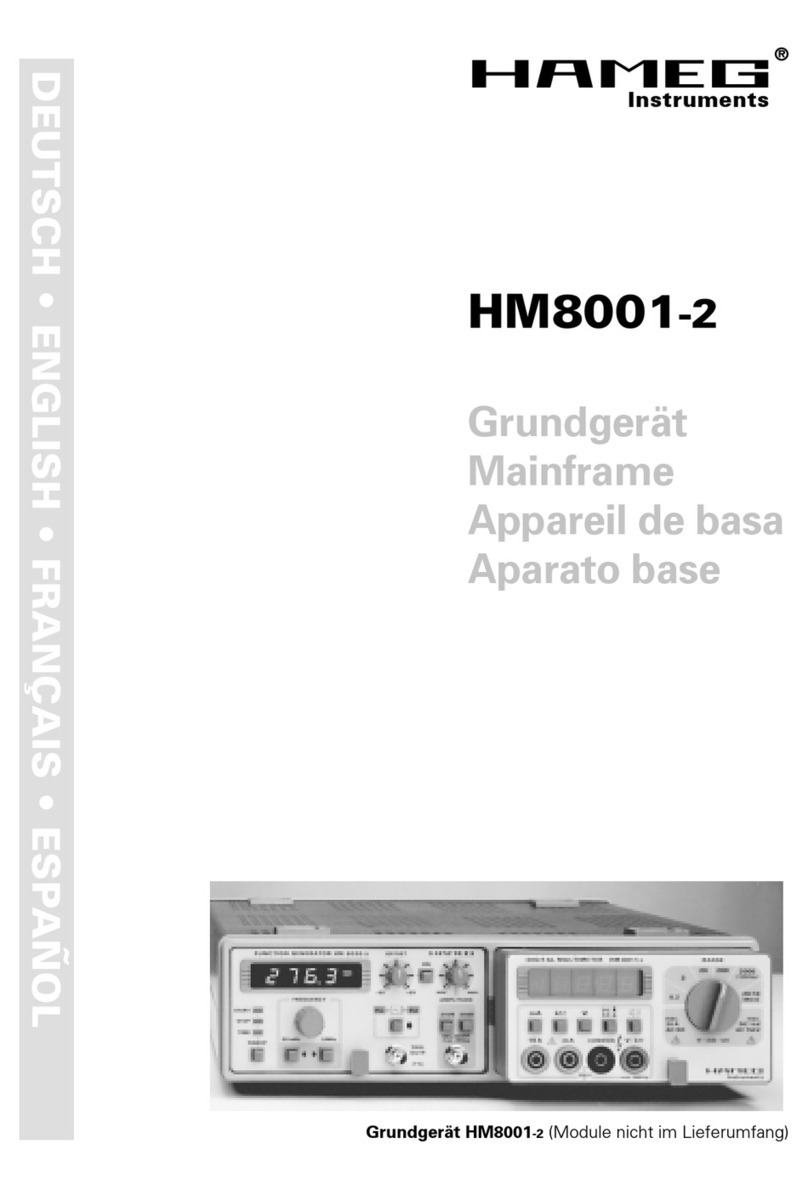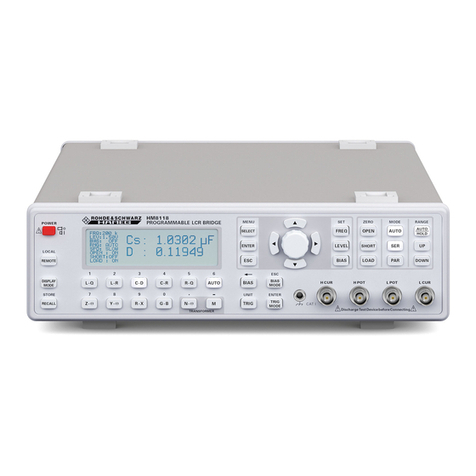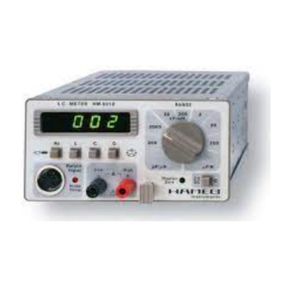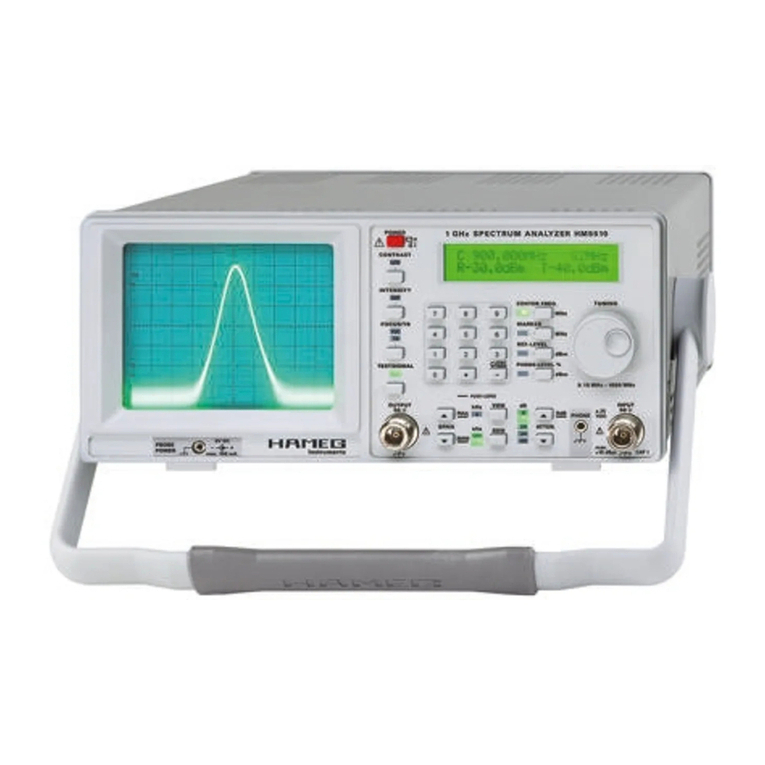41
Important Notes
or national safety regulations and rules for the prevention
of accidents must be observed in all work performed.
The measuring instrument is designed for use in the fol-
lowing sectors: Industry, residential, business and com-
mercial areas and small businesses.
The measuring instrument is designed for indoor use only.
Before each measurement, you need to verify at a known
source if the measuring instrument functions properly.
1.6 Ambient Conditions
The allowed operating temperature ranges from +5°C to
+40°C (pollution category 2). The maximum relative hu-
midity (without condensation) is at 80%. During storage
and transport, the temperature must be between -20°C
and +70°C. In case of condensation during transportation
or storage, the instrument will require approximately two
hours to dry and reach the appropriate temperature prior
to operation. The measuring instrument is designed for
use in a clean and dry indoor environment. Do not operate
with high dust and humidity levels, if danger of explosion
exists or with aggressive chemical agents. Any operating
position may be used; however adequate air circulation
must be maintained. For continuous operation, a horizontal
or inclined position (integrated stand) is preferable.
The maximum operating altitude for the instrument is
2000 m. Specications with tolerance data apply after a
warm up period of at least 30 minutes at a temperature of
23 °C (tolerance ±2 °C). Specications without tolerance
data are average values.
1.7 Warranty and Repair
Our instruments are subject to strict quality controls. Prior
to leaving the manufacturing site, each instrument under-
goes a 10-hour burn-in test. This is followed by extensive
functional quality testing to examine all operating modes
and to guarantee compliance with the specied technical
data. The testing is performed with testing equipment that
is calibrated to national standards. The statutory warranty
provisions shall be governed by the laws of the country
in which the product was purchased. In case of any com-
plaints, please contact your supplier.
Use the measuring instrument only with original HAMEG measur-
ing equipment, measuring cables and power cord. Never use in-
adequately measured power cords. Before each measurement,
measuring cables must be inspected for damage and replaced if
necessary. Damaged or worn components can damage the instru-
ment or cause injury.
To disconnect from the mains, the low-heat device socket on the
back panel has to be unplugged.
The product may only be opened by authorized and
qualied personnel. Prior to working on the product or
before the product is opened, it must be disconnected
from the AC supply network. Otherwise, personnel will
be exposed to the risk of an electric shock.
Any adjustments, replacements of parts, maintenance and
repair may be carried out only by authorized technical per-
sonnel. Only original parts may be used for replacing parts
relevant to safety (e.g. power switches, power transform-
ers, fuses). A safety test must always be performed after
parts relevant to safety have been replaced (visual inspec-
tion, PE conductor test, insulation resistance measurement,
leakage current measurement, functional test). This helps
ensure the continued safety of the product.
1.8 Maintenance
The display may only be cleaned with water or an
appropriate glass cleaner (not with alcohol or other
cleaning agents). Follow this step by rubbing the display
down with a dry, clean and lint-free cloth. Do not allow
cleaning uid to enter the instrument. The use of other
cleaning agents may damage the labeling or plastic and
lacquered surfaces.
1.9 Line fuse
The instrument has 2 internal line fuses: T 0.8 A. In case of
a blown fuse the instrument has to be sent in for repair. A
change of the line fuse by the customer is not permitted.
1.10 Power switch
The instrument has a wide range power supply from 105
V to 253 V, 50 Hz or 60 Hz ±10 %. There is hence no line
voltage selector.
Fuse type:
Size 5 x 20 mm; 250V~, C; IEC 127, Bl. III; DIN 41 662 (pos-
sibly DIN 41 571, Bl. 3). Slow-blow (T) 0,8A.
1.11 Batteries and Rechargeable Batteries/Cells
1. Cells must not be disassembled, opened or crushed.
2. Cells and batteries may not be exposed to heat or re.
Storage in direct sunlight must be avoided. Keep cells
and batteries clean and dry. Clean soiled connectors
using a dry, clean cloth.
Clean the outer case of the measuring instrument at regular in-
tervals, using a soft, lint-free dust cloth.
Before cleaning the measuring instrument, please make sure that
it has been switched off and disconnected from all power sup-
plies (e.g. AC supply network).
No parts of the instruments may be cleaned with chemical clean-
ing agents (such as alcohol, acetone or cellulose thinner)!
If the information regarding batteries and rechargeable batteries/
cells is not observed either at all or to the extent necessary, prod-
uct users may be exposed to the risk of explosions, re and/or se-
rious personal injury, and, in some cases, death. Batteries and re-
chargeable batteries with alkaline electrolytes (e.g. lithium cells)
must be handled in accordance with the EN 62133 standard.
